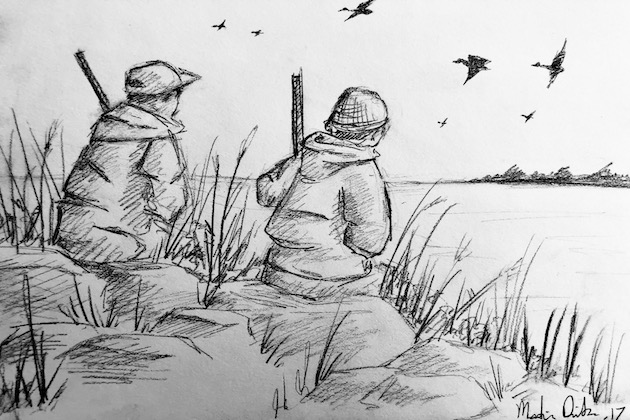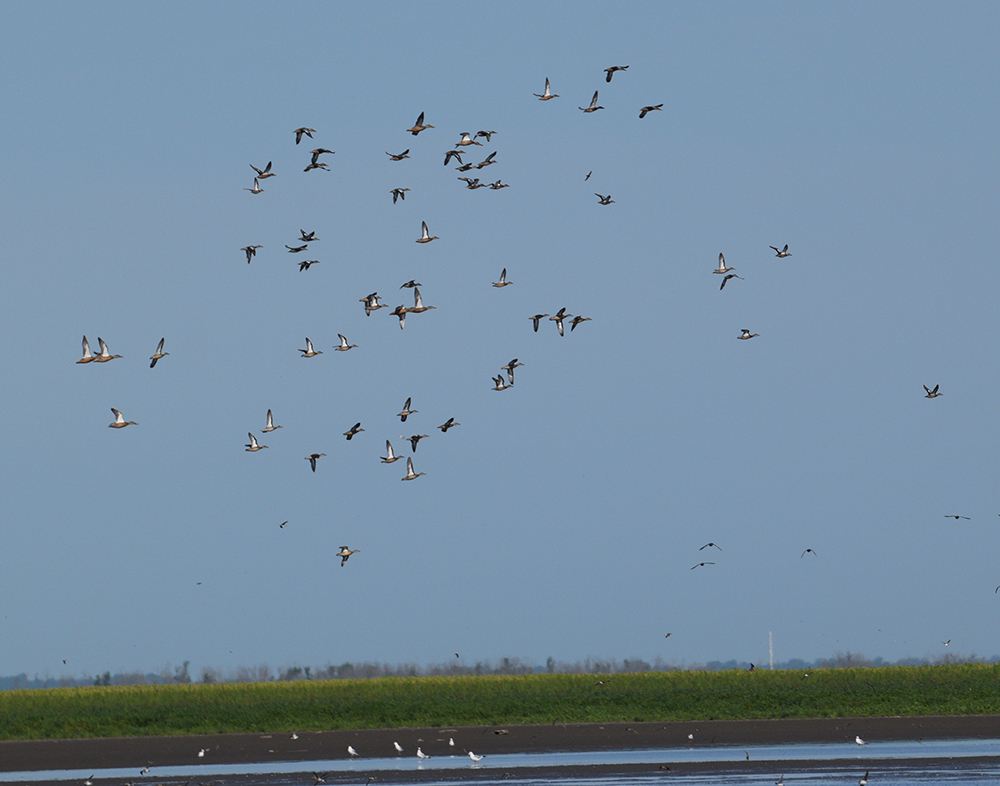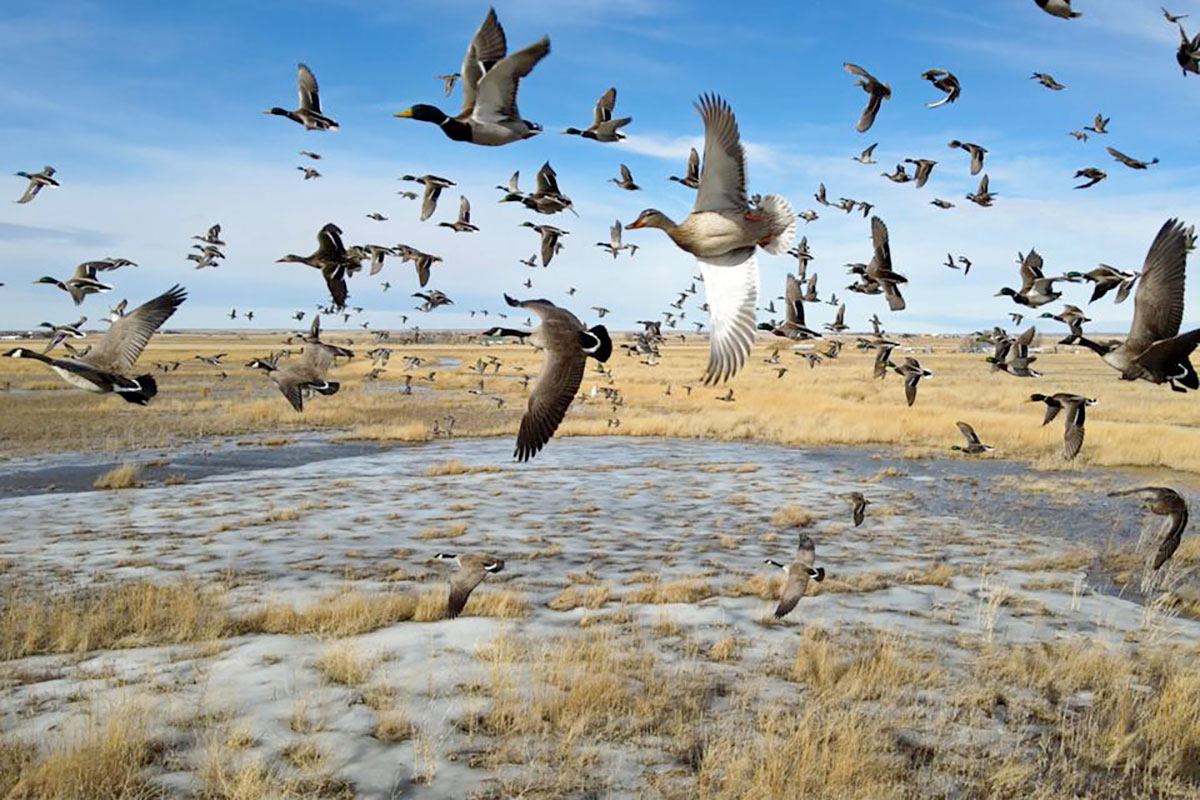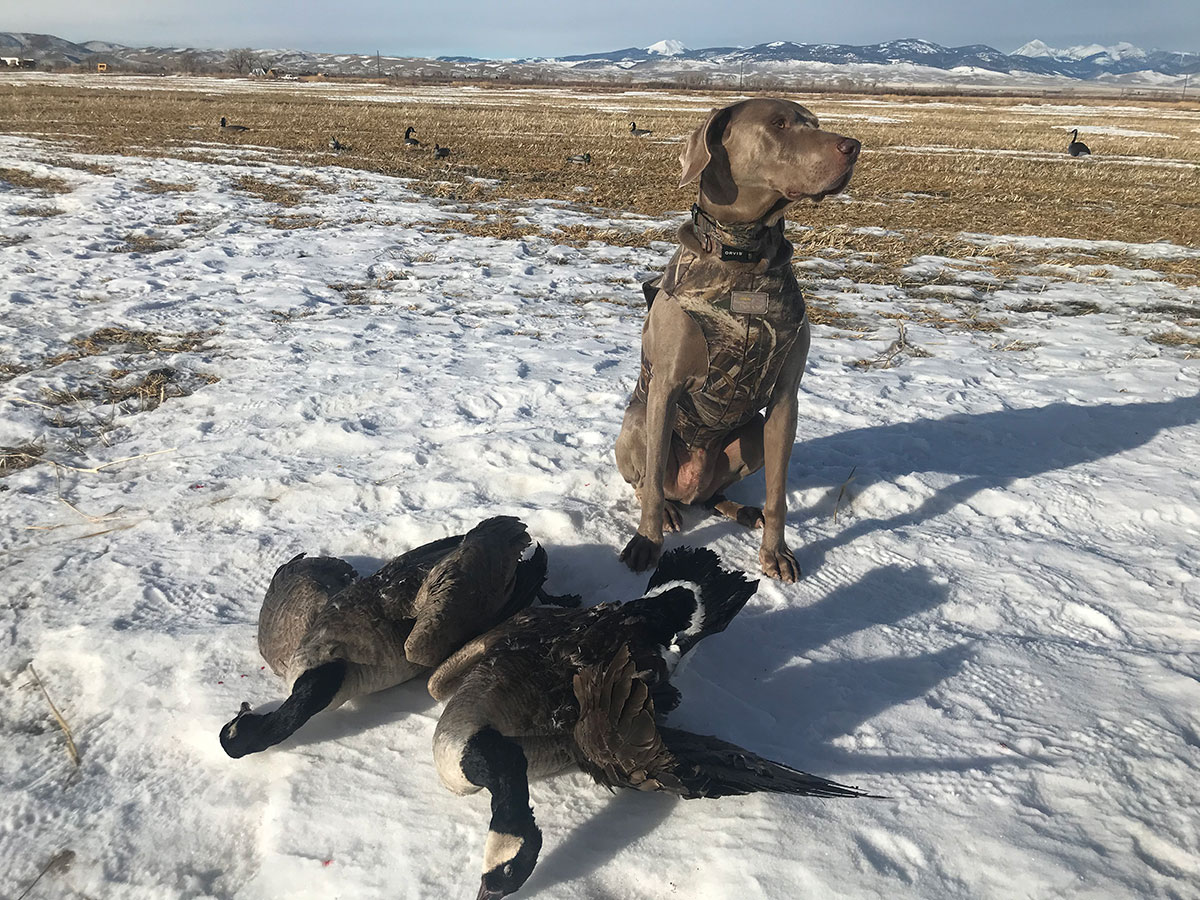Beetle Island, a wretched place overrun with bugs, offered us a once-in-a-lifetime view of a major waterfowl migration along the Mississippi Flyway.
My buddy and I hunted ducks on Beetle Island. We coined the name for the millions of ladybug-type insects that were covering it and pelting us like hail stones in the strong breeze.
It was just a windswept pile of rocks sitting some 400 yards offshore in a small bay of northern Big Bay DeNoc. Due to the extended drought in that area, a few scrawny plants had sprouted, at least temporarily, and though you might locate it on a depth chart, you’ll not find it on any map.
The day before, while sitting in a shore blind half a mile away at the end of a long finger-shaped point, we’d watched lots of ducks passing near it but staying well beyond our range. Knowing the water was pretty shallow out to it, that night during dinner we made plans to give it a try.
Early the next morning, heavily laden, we waded out in the dark to this bit of land protruding just above the waves. It had taken two trips by each of us to ferry all of our gear to this wretched little place overrun with bugs. As the wind knifed between the rocks, whipping our burlap camouflage and bug-blasting us, we sat shivering in our bag chairs awaiting shooting light, our decoys completely encircling our small hide.
Morning broke steel-gray, with gale-force winds blowing the tops from the waves. We eagerly anticipated the ducks, and they did not disappoint. We quickly downed a couple of bluebills from a flock of seven and a drake goldeneye that was the only bird to fall from an undeviating flock being pushed along by the winds at that you-can’t-swing-fast-enough speed.
As the false dawn retreated to full light, we missed a couple more close shots, the wind playing havoc with our leads. Then the shooting just stopped, but we started to see lots of ducks and geese. Then we saw more—many, many, more.
For once we were in the right place at the right time—not for great duck shooting, but to witness a major migration along the Mississippi Flyway. Hour after hour went by as we sat there and watched flock after flock of ducks, geese, and other birds, all heading south, never firing another round.
Some flocks contained thousands of waterfowl. Even small flocks numbered in the hundreds, all being driven south by the strong northerly winds. Many were loudly calling, telling all that the migration was on and winter was close behind.
Some groups flew so high they were visible only through high-powered binoculars. Others flew so low you’d lose sight of them as they darted through the troughs of the waves, wing tips touching the froth. And still they came.
We saw huge flights of diving ducks that had ridden the winds nonstop from the tundra lakes. Massive flocks of puddle ducks, having nested in the prairie potholes of Manitoba, had gathered in force and were beating a hasty retreat in front of the coming freeze. Incredible flocks of snow geese, their white wings tipped with black, mixed with great clouds of Canada geese, all twisting and dipping on the tailing winds. Gigantic vees of geese covered the sky above us, the patterns spreading out, closing, then spreading out again as new birds took the lead or dropped back to rest, like enormous undulating nebulae, all heading to their favorite wintering grounds.
By late afternoon when we finally picked up and waded back to shore, literally millions of geese and ducks had flown by Beetle Island. It had been nothing short of extraordinary. We had just witnessed the southbound flight of perhaps a quarter of the all the waterfowl of North America. Not just waterfowl, mind you, but raptors, shorebirds, gulls, and songbirds had passed by us as well. Feathered adventurers of all kinds were moving on the strong winds, each species making their annual trek from their northern nesting areas to their wintering habitats.
Next fall, when the cold winds start to howl and dark bands of clouds come along like lines of soldiers marching down from the north, we’re already planning to wade back out to that little pile of rocks. Hopefully it will still show above the waves and the bugs will have settled elsewhere. Better yet, hopefully we’ll see a few waterfowl, perhaps even down a couple, and, if the stars all line up just so, be able to once again witness the grand passage.
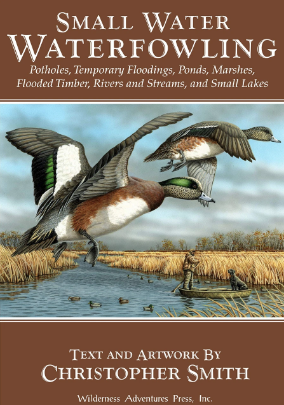 When it comes to actually shooting ducks and geese over water, the action is on the small places – the inland lakes, the ponds and potholes, the floodings and creeks and backwaters. Day in and day out, that’s where the ducks are, and that’s where Chris Smith takes you.
When it comes to actually shooting ducks and geese over water, the action is on the small places – the inland lakes, the ponds and potholes, the floodings and creeks and backwaters. Day in and day out, that’s where the ducks are, and that’s where Chris Smith takes you.
However, each of these places requires a separate technique, alternate decoys spreads and calling concepts, and different gear to use. He tells you how to approach each type of hunting for the weather and conditions. He knows when and when not to call. He describes the skills a good waterfowl dog needs to know for each place, things he’s taught his succession of Labrador retrievers over the years. Buy Now

